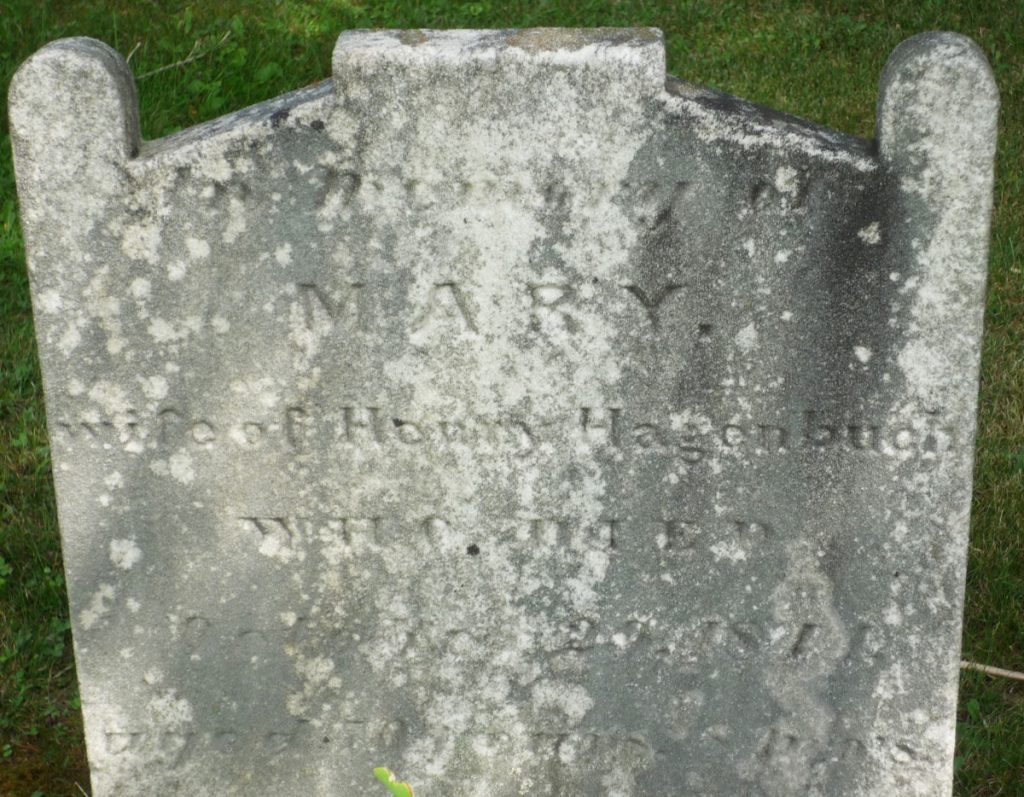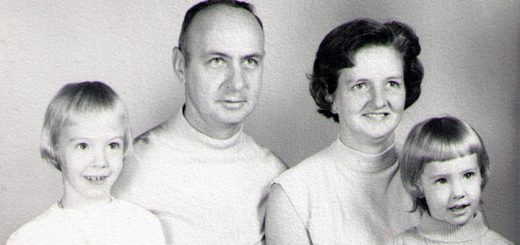Naming Conventions

Everyone has a name – some moniker to be called by others. While everyone receives a name at birth, this can change over the course of a lifetime. Nicknames come to mind, but adoptions and marriages frequently lead to modified names too. For genealogists, names are exceedingly important. They document family histories and help to tell the stories of individuals.
Over the last few years, this site has featured several articles about family names including:
This article will build upon the above articles by exploring the individual pieces of names, what these tell us, and how to best document them.
When considering a person’s name, what initially comes to mind is the first name each person is called. On the face of it, a first name appears to be a straightforward enough concept – it is the first of all the names a person has. However, many early Hagenbuchs appear to have had the same first names, even within the same immediate families. For instance, looking at the daughters of Andreas Hagenbuch (b. 1711, d. 1785), it is noted that most of them confusingly had the first name Anna. Why?
During the medieval period, Europe’s Roman Catholics had a tradition of baptizing children with both a saint’s name and a secular name. Many protestants, such as Pennsylvania’s German Lutherans, continued this tradition through the 18th century, explaining names like Anna Elizabeth Hagenbuch (b. 1754, d. 1825). While the name Anna came from Saint Anne, the mother of Mary, the name Elizabeth came from a family friend and baptism sponsor, Anna Elizabeth Romig (b. 1723, d. 1797).

Gravestone of Salome “Salme” Hagenbuch (b. 1797, d. 1810) in Hidlay Church cemetery. Salome was the daughter of Henry and Mary Hagenbuch.
In the early Hagenbuch family, those with a saint and a secular name were typically called by their secular name. In his will, Andreas refers to Anna Elizabeth simply as Elizabeth. However, this convention was not always the rule. According to the gravestone of Anna Elizabeth, she was actually buried as Anna, indicated that later in life she may have gone by her saint’s name rather than her secular name.
Seeing that there was no set rule for referring to people with a saint and a secular name, this site has adopted a convention of placing the saint’s name as the first name and the secular name as the middle name.
As a result, a person’s middle name can be a secular name using the old European convention or something entirely different. As discussed in a previous article, middle names might be the mother’s maiden name, given to honor the maternal side of the family, or simply be a name the child’s parents liked.
Nicknames are equally as confusing. Often, a nickname is given as a diminutive form of the first name. For example, Elizabeth becomes Liz or Joseph becomes Joe. There are less obvious forms too, such as Johannes becoming Hans and Mary becoming Polly.
Then there are those names used purely for differentiation. For example, Hiram Hagenbuch, Jr. (b. 1886, d. 1979) went by Harry in order to separate him from his father Hiram Hagenbuch, Sr. (b. 1847, d. 1897). Nicknames, therefore, are a useful way for genealogists to note the everyday name used by a person.
So, as it currently stands this site’s naming convention is as follows:
- First Name: The literal first name in a person’s full name, such as one’s saint name.
- Nickname: The name commonly used to refer to a person, especially if different from the first name. It is wrapped in quotes, such as “Polly”.
- Middle Name: Any name or names following the first name, not including the last name.
Consider the example of Martha Jane Hagenbuch (b. 1878, d. 1972) who went by the name Mattie. Her first name, nickname, and middle name would be written as Martha “Mattie” Jane.
Now, it is necessary to point out that the use of quotes around the nickname differs from the previous naming convention used on this site. That earlier convention placed the maiden name in quotes. What is a maiden name? Often following the word née, meaning born, it is simply a way of noting a previous name, especially in the case of a woman who changed her last name after being married.
Marriage, though, isn’t the only reason a person would change his or her last name. Such is the case with adoption. Frequently, children who are taken in by another family will have their last names changed to that of their adoptive family. Therefore, it is better to think of the maiden name as another type of birth name, enabling it to be applied equally in cases or marriage or adoption.
The last name, which is also called the surname, is quite literally the final part of a person’s name. Last names are typically thought of as family names and help to define one’s relationship to their parents. Once again, there are a number of different conventions for these. A last name may either come from the paternal side, maternal side, or both in a hyphenated “double barrelled” arrangement. Noting this, a last name may have one or more names which show family lineages.
Adding to this site’s naming conventions are:
- Birth Name: The last name a person was given at birth but later changed. It is wrapped in parentheses.
- Last Name: The most recent surname or family name used by a person.
Consider again the example of Martha “Mattie” Jane. She was born a Hagenbuch and later married Charles White (b. 1868, d. 1943). Using the above conventions, her name would be written as Martha “Mattie” Jane (Hagenbuch) White.
Yet, there is one final part of a person’s name which should not be forgotten. This is the suffix. Suffixes are often written as abbreviations and typically show some sort of naming relationship within a family line. For example, Sr., Jr., I, II, and III all indicate that one’s full name has been inherited from the previous generation.
This naming convention is noted as:
- Suffix Name: A final part of the name, usually an abbreviation, and separated from the last name by a comma.
On the face of it, a person’s name appears to be a simple, straightforward method for referring to someone. However, it is easy to overlook just how much complexity and significance names actually have. Names record relationships across generations, exhibit personalities, and tell meaningful individual stories.
Older articles on this site do not consistently follow all of the naming conventions listed in this article. Most notably, birth names were previously wrapped in quotes instead of parentheses. Going forward, this older convention will be discontinued in favor of conventions discussed above.


















